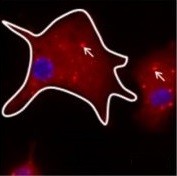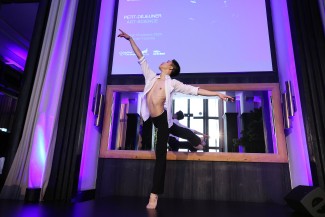Parkinson’s disease is the second-most common neurodegenerative condition after Alzheimer’s disease, and the main cause of Parkinsonian syndrome.
-

200 Mille personnes touchées en France
-
5 % des cas de maladie de Parkinson sont familiaux c’est-à-dire héréditaires
-

13 gènes ont été identifiés comme causatifs dans cette pathologie
Parkinson’s disease is the second-most common neurodegenerative condition after Alzheimer’s disease. In France, it currently affects around 200,000 people, and the number of new cases rises steadily each year as the population ages.
Age is the biggest risk factor for developing Parkinson’s disease, with a prevalence of 0.04% in people aged between 40 and 49, rising to 2% in those aged over 80. Men are more commonly affected than women, with a ratio of 2 men for every 1 woman after the age of 40.
The main symptoms of Parkinson’s disease are the degeneration of dopaminergic neurons in the dark matter of the brain, located in a specific region of the brain stem and consisting mainly of dopamine neurons. Other regions can also be affected, resulting in ‘non-motor’ symptoms such as sleep disorders, blood pressure disorders and, later on, gait problems. Each of these disorders corresponds to different neuronal circuits.
The most widely known clinical signs of the disease are rest tremors, but the most common and characteristic symptoms are slowness of movement (akinesia) and muscle stiffness.
Most treatments for Parkinson’s disease aim to improve symptoms and slow the progression of the condition.
Causes of Parkinson’s disease
A total of 5% of Parkinson’s cases are familial. In other words, they are hereditary, linked to a mutation of a dominant or recessive gene. To date, 13 genes have been identified as causative in this condition.
Other cases are classed as sporadic, where disease onset occurs after exposure to an environmental factor in genetically predisposed people. Parkinson’s disease, like many neurological diseases, is said to be multifactorial. A range of environmental factors and genetic predispositions leading to a higher risk of developing the disease have been identified in recent years.

Biological mechanisms of Parkinson’s disease
The main molecular driver of Parkinson’s disease is a protein expressed in neurons called α-synuclein. As the disease progresses, this protein aggregates pathologically to form clumps of protein known as Lewy bodies. This phenomenon occurs mainly in the dopaminergic neurons of the brain’s dark matter, the region located in the brain stem, but they also appear in other areas of the brain in Parkinson’s disease. The death of neurons linked to α-synuclein aggregation causes a sharp drop in the production of neurotransmitters, molecules that enable communication between neurons, triggering the onset of symptoms.

Parkinson’s disease symptoms, diagnosis and progression
The damage to the dark matter and the striatum, followed by other brain regions, leads to the symptoms observed in Parkinson’s patients.
The first symptoms that lead to a Parkinson’s disease diagnosis are akinesia (slowness of movements) muscle hypertonia (stiffness of muscles) and rest tremors that disappear with a voluntary movement. This combination of symptoms indicate Parkinsonian syndrome.
To diagnose Parkinson’s disease, pure Parkinsonian syndrome that is asymmetric and sensitive to dopaminergic treatment must be identified.



Treatments for Parkinson’s disease
The aim of treatments prescribed to patients with Parkinson’s disease is to mitigate the dopamine deficit inherent in neuronal death. There are two types of treatment:
- L-DOPA, a dopamine precursor molecule able to cross the blood-brain barrier that is converted into dopamine in the brain.
- Dopamine agonists – molecules with the same effect as dopamine. These two treatments for Parkinson’s act in the same way, and aim to restore normal transmission between neurons. Unfortunately, they have no effect on the cause or progression of the disease.
Deep brain stimulation is also a commonly used therapy for treating the symptoms of the disease.
Other non-drugs-based approaches, such as regular physical activity and intellectual activities, are beneficial for Parkinson’s patients.

Support Paris Brain Institute
Did you like this content and did it answer the questions you were asking? Don't hesitate to support Paris Brain Institute.








